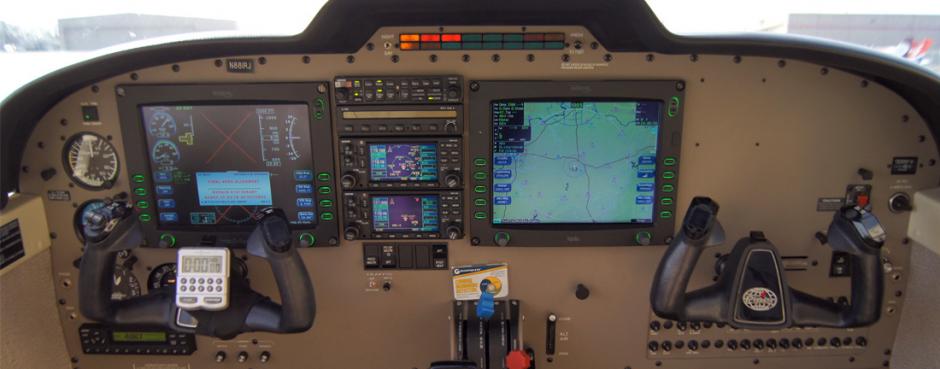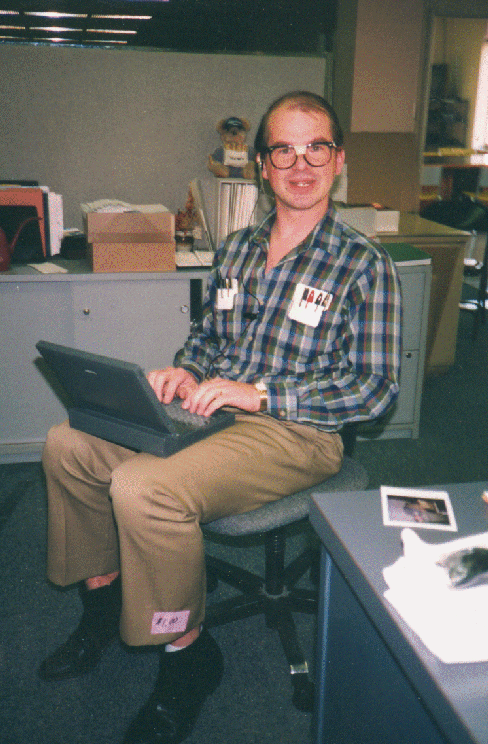If there was ever a project to occupy a gadget freak/computer nerd over a rainy weekend in Georgia, it is figuring  out how to keep the information up to date in the electronic playground that is my new plane’s cockpit.
out how to keep the information up to date in the electronic playground that is my new plane’s cockpit.
If you look at the photo to the right, you will see that my panel consists of two large displays with two smaller GPS/Radios between them. The two large displays are made by Avidyne and are the Primary Flight Display (PFD) on the left and the Multi-Function Display (MFD) on the right. The PFD derives information from onboard instruments and from the two Garmin GPS’s, and replaces traditional flight instruments such as the airspeed indicator, Altimeter,Horizontal Situation Indicator, Attitude Indicator, rate of climb, etc. The MFD does several things but usually shows a map with the plane situated on it from GPS information. It also has an engine information page showing various temperatures, fuel flow,etc and it has a Chart page with instrument approaches, airport diagrams, and other useful data.
Having all of this information essentially replaces both the old “steam guage” instruments and the bulging flight bags you often see pilots carrying full of approach charts for every airport and other needed paperwork. And it provides a wealth of information I never had in my past flying, such as real-time weather (from XM Radio) and traffic information showing other planes flying nearby. Its all simply fabulous, but I am finding out it comes at a cost, both financially to pay for the various services and in the time required to download and install updates monthly to the system.
So far in my exploration, I have figured out that I will need a subscription to the XM weather service for the MFD, monthly updates to the basic “Nav Data” on the MFD, monthly updates to the charts on the MFD, and monthly updates to the charts for both Garmin GPS’s. The weather service should be fairly simple and just involves calling XM Radio and activating an account for the weather receiver, kind of like activating and subscribing to Satellite radio in your car. The remaining subscriptions involve using a Windows computer (not a Mac) and a special program to download the updates from a chart company called Jeppesen and put them on USB Drive’s for the MFD or memory cards for the Garmin’s, and then bringing these sticks to the plane and plugging them into the gadgets to upload the new data. It shouldn’t be too hard once I get going and find a Windows computer when I’m not at my office, but registration and login’s and passwords to set it all up are pretty overwhelming. Tomorrow I will go out to the hangar and try to get all the serial numbers of the equipment necessary to begin setting this up. Meanwhile, I’ve spent the weekend reading manuals and Googling things to learn what I need to know. I’m having a blast.
 It is clear to me now that this blog, while it will contain some flying adventures that may be of interest to friends and family, is also going to dive into some of the technical aspects of modern-day flying, a subject that may interest some and bore others to tears. As I’ve always said, read what you like and skip the rest, I may try to move the more technical stuff off of the main journal page and onto a new section dealing with such subjects as avionics, engine care, and other subjects of interest only to pilots or would-be pilots. We’ll see how it goes, but I hope to provide sections you may choose, depending on your interests. Not everybody is fascinated by how to lean an engine at altitude.
It is clear to me now that this blog, while it will contain some flying adventures that may be of interest to friends and family, is also going to dive into some of the technical aspects of modern-day flying, a subject that may interest some and bore others to tears. As I’ve always said, read what you like and skip the rest, I may try to move the more technical stuff off of the main journal page and onto a new section dealing with such subjects as avionics, engine care, and other subjects of interest only to pilots or would-be pilots. We’ll see how it goes, but I hope to provide sections you may choose, depending on your interests. Not everybody is fascinated by how to lean an engine at altitude.
For the moment though, I plan to document my learning curve right here on the blog, and I’m not offended if anyone who came here to read about boating or the births of my grandchildren chooses to check out. I’ll miss you, but feel free to visit when you like.